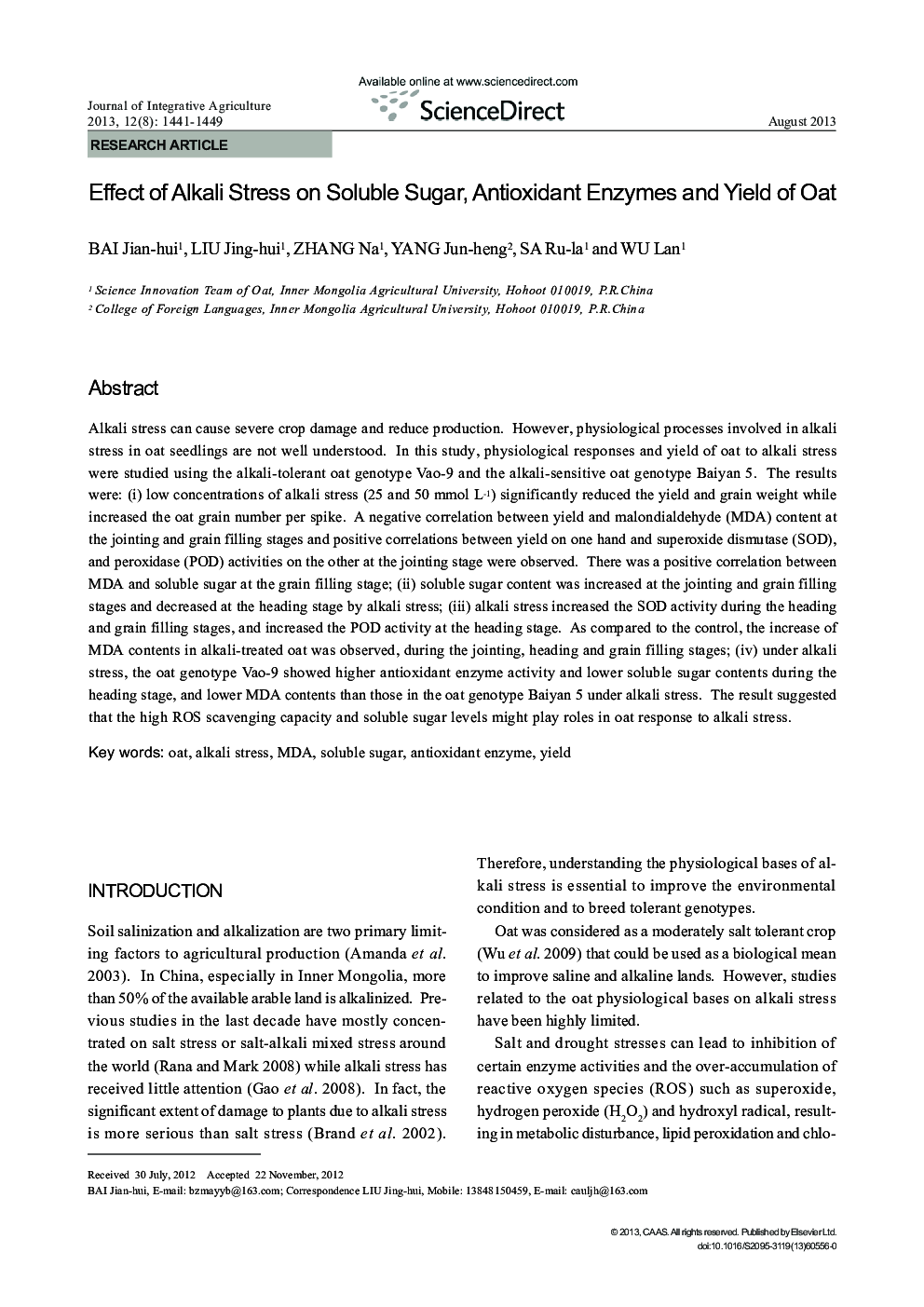| Article ID | Journal | Published Year | Pages | File Type |
|---|---|---|---|---|
| 4494945 | Journal of Integrative Agriculture | 2013 | 9 Pages |
Alkali stress can cause severe crop damage and reduce production. However, physiological processes involved in alkali stress in oat seedlings are not well understood. In this study, physiological responses and yield of oat to alkali stress were studied using the alkali-tolerant oat genotype Vao-9 and the alkali-sensitive oat genotype Baiyan 5. The results were: (i) low concentrations of alkali stress (25 and 50 mmol L−1) significantly reduced the yield and grain weight while increased the oat grain number per spike. A negative correlation between yield and malondialdehyde (MDA) content at the jointing and grain filling stages and positive correlations between yield on one hand and superoxide dismutase (SOD), and peroxidase (POD) activities on the other at the jointing stage were observed. There was a positive correlation between MDA and soluble sugar at the grain filling stage; (ii) soluble sugar content was increased at the jointing and grain filling stages and decreased at the heading stage by alkali stress; (iii) alkali stress increased the SOD activity during the heading and grain filling stages, and increased the POD activity at the heading stage. As compared to the control, the increase of MDA contents in alkali-treated oat was observed, during the jointing, heading and grain filling stages; (iv) under alkali stress, the oat genotype Vao-9 showed higher antioxidant enzyme activity and lower soluble sugar contents during the heading stage, and lower MDA contents than those in the oat genotype Baiyan 5 under alkali stress. The result suggested that the high ROS scavenging capacity and soluble sugar levels might play roles in oat response to alkali stress.
